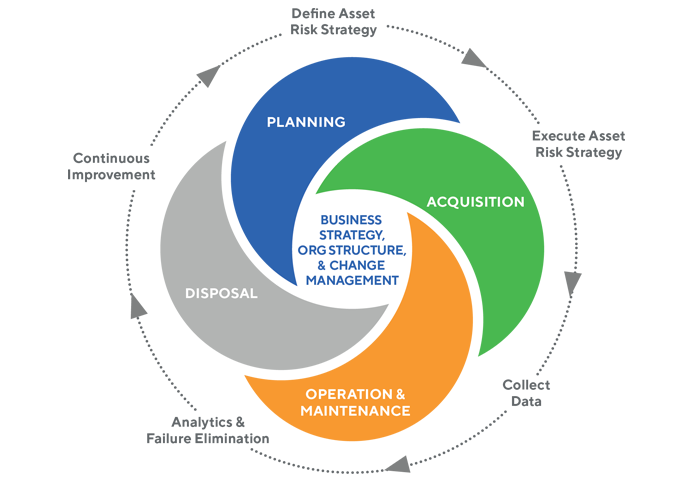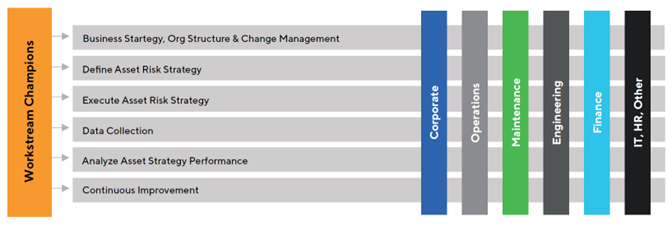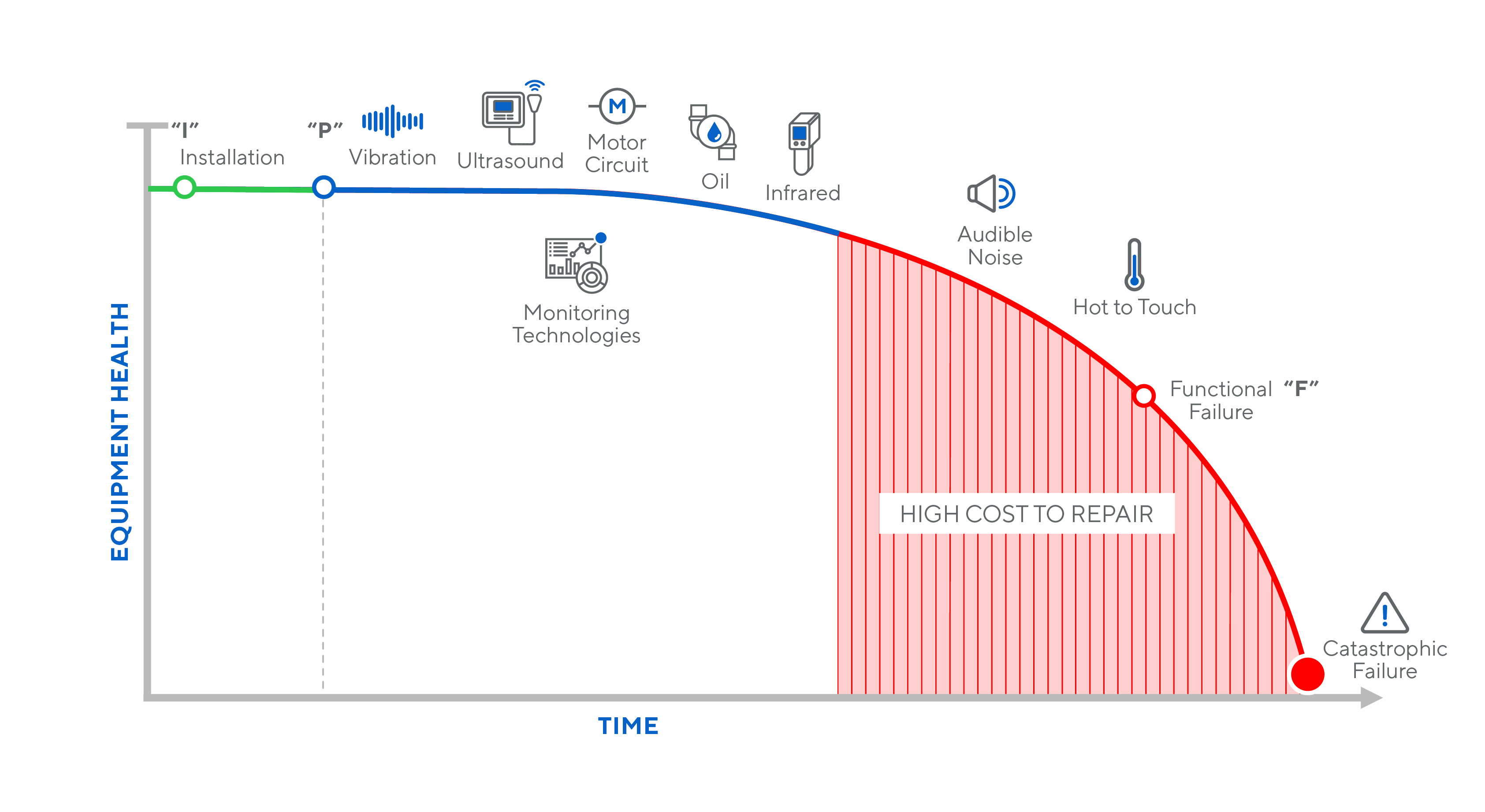EBOOK
Get the full eBook, "Accelerating the Reliability Journey in the Bottling Industry", for a more in-depth discussion of building a culture of total asset management and continuous improvement.
Today’s advancements in technology (e.g. IoT, edge devices, sensors, etc.) have enabled various industries within the manufacturing sector to have more access to data and effectively use it to provide insights as to how equipment is performing. Being able to spot impending failures before they happen helps mitigate high maintenance costs, unplanned downtime, and loss of production or safety and environmental implications. However, to take advantage of this technology, it is imperative that a complete and accurate equipment maintenance strategy be in place to implement the right technologies for the right equipment failure modes, and that it be executed at the right frequency to improve.
This article focuses on the current trends and challenges in the bottling industry, and how these companies are transitioning to new methodologies for monitoring the performance of their assets. Further, it demonstrates the critical components of reliability as a whole and the importance of assessing the maturity of a reliability program before adopting new technologies to ensure that the right people and processes are in place to drive the success of the initiative. Once these items are in place, we will discuss why it is imperative to implement a methodology and process for continuous improvement and sustainability to support the new program.
The bottling industry is one of the most significant segments of food & beverage, playing a critical role in protecting and preserving products. According to Mordor Intelligence, the United States Beverage Contract Bottling and Filling Market is expected to register a compound annual growth rate of 9.12% in the next five years. Therefore, consumption of bottled drinks continues to increase, fueling the diversification and expansion of product offerings from producers.
Bottling companies are required to continue increasing their capacity to support the market growth and the diversification of products. Along with the need to increase capacity, bottlers are faced with the challenge of finding and retaining skilled workers due to labor shortages. A successful execution of any asset risk strategy must address all these issues and more in the very near future.
Although the bottling industry has been around for decades, there has been an increase in operational challenges to meet consumer demands, all while managing risk due to material and labor supply shortages. Companies in this competitive environment have had to initiate a change in culture and begin to look for solutions that can simplify their antiquated and difficult processes and optimize them with automation.
Bottling organizations would benefit from looking at their organization from a total asset performance management perspective. This includes careful consideration within each of the major entities in executing the entire lifecycle of the asset as depicted in the asset performance management lifecycle diagram in Figure 1.

Figure 1: Asset Performance Management Lifecycle
Determining the maturity level of any company is the first step in understanding where there may be restraining factors to improving reliability. This is accomplished by experienced people having worked in the industry for many years that have eliminated similar obstacles in this environment and implemented tools, processes, and methodologies to overcome these deficiencies. They identify specific gaps and propose recommendations to close these gaps in a complete asset strategy that aligns with the specific bottling company strategy.
In the bottling industry, there has been a shift of focus towards a total productive maintenance (TPM) mindset, which is the process of using machines, equipment, employees, and supporting processes to improve the integrity of production and the quality of systems. Understanding what areas an organization is doing well and what areas need improvement is critical to reaching total productive maintenance. This approach is supported and enhanced by using the complete asset performance management lifecycle.
TPM involves an emphasis on proactive and preventive maintenance techniques, and strives for:
While these are also major goals of the APM lifecycle, it utilizes additional workstreams to ensure improvements are made and are sustainable. On a company’s journey towards a TPM mindset and best practices, there must be established roles, governance, and change management efforts to really drive the increase in productivity and ensure that it will be sustainable in the future to support continuous improvement efforts.
Many times, this important workstream is missed when only using a TPM approach. Therefore, having the right people and processes is so vital to an organization. Clearly defined roles and responsibilities, skilled employees, and standardized processes will enable an organization to be more efficient in its operations and continually improve.
Current major goals and objectives of the bottling industry include:
Applying the six main workstreams of asset performance management will address the leading challenges within the bottling industry.


Figure 2: P-F Curve
The frequency of when the failures are detected, as well as the methodologies used, both play a role in determining the length of the P-F interval. The use of condition-based maintenance enables companies to slow down the progression of an asset from a potential failure to a functioning failure by incorporating more sensitive methods of inspection (i.e., oil analysis, ultrasound, vibration, thermography, motor circuit testing) and setting correct parameters to determine the frequency of corrective actions. This results in lower maintenance costs due to an earlier detection of the failures. A proper execution of an asset management strategy will result in quality data captured from condition monitoring, proper identification of work, and optimized planning and scheduling.
Citing the above APM lifecycle and example journey, it can be seen how this approach is critical to highlighting the commonly overlooked barriers of adopting new technologies and the importance of looking at the foundational elements of reliability best practices before implementing predictive technologies. This approach continually supports the digital transformation of the bottling company and aids in directly overcoming the industry challenges.
One key among the barriers of adoption that companies are faced with is a culture change to the outdated processes and practices. To ensure the success of any initiative intended to support the maintenance and reliability program, it is critical to first establish a strategy for organizational alignment and change management which includes upfront team training. Once this component has been implemented, the next areas of focus include defining the asset risk strategy, executing the asset strategy, data collection, monitoring and analyzing the strategy effectiveness, and continuous improvement.
When these components are executed against best practices, companies can ensure that they are executing on the right work on the right pieces of equipment while validating their efforts with proper data representation. The value of incorporating these elements into any reliability program is to be able to manage and drive business through dependable data derived from condition-based maintenance technologies, work management execution, production losses, and real-time operations data.
Condition monitoring is just one aspect of the entire reliability journey. The implementation of strategic asset management strategies allows companies to be more data-driven when monitoring production loss, maintenance KPIs, and process compliance. Aligning on these components before adopting new technologies for process optimization will enable companies to get the most out of their condition monitoring program and ensure continuous success and improvement. Otherwise, it can be difficult to justify the cost and culture change of integrating new technologies to any organization.
There are many challenges facing the bottling industry today, including sustainability, new regulations in quality and increasing safety standards, elevated mandates for technological innovation, waste reduction, and supply chain issues. However, using the described asset performance management approach can provide a methodology, with tools and processes to directly address these challenges and support the digital transformation of bottling companies all while positively impacting the key metrics desired. These metrics include:
With additional benefits in the following areas:
Get the full eBook, "Accelerating the Reliability Journey in the Bottling Industry", for a more in-depth discussion of building a culture of total asset management and continuous improvement.
Allied Reliability provides asset management consulting and predictive maintenance solutions across the lifecycle of your production assets to deliver required throughput at lowest operating cost while managing asset risk. We do this by partnering with our clients, applying our proven asset management methodology, and leveraging decades of practitioner experience across more verticals than any other provider. Our asset management solutions include Consulting & Training, Condition-based Maintenance, Industrial Staffing, Electrical Services, and Machine Reliability.
Receive the latest insights on reliability, maintenance, and asset management best practices.

